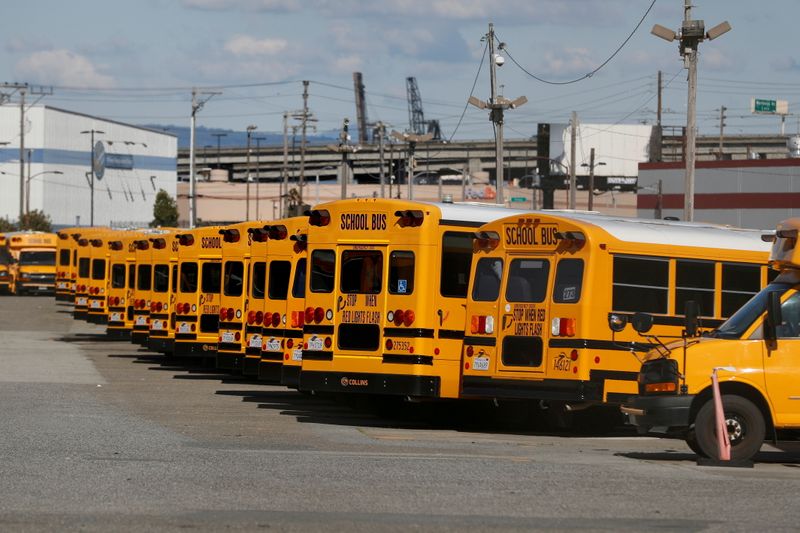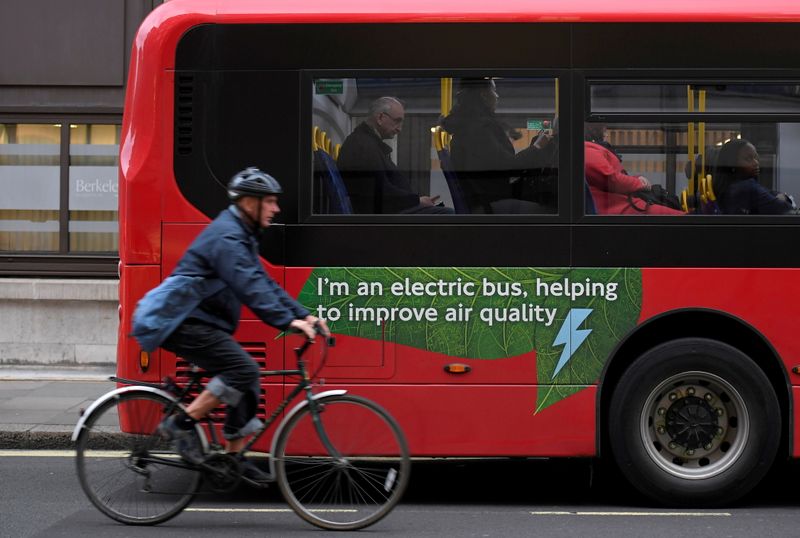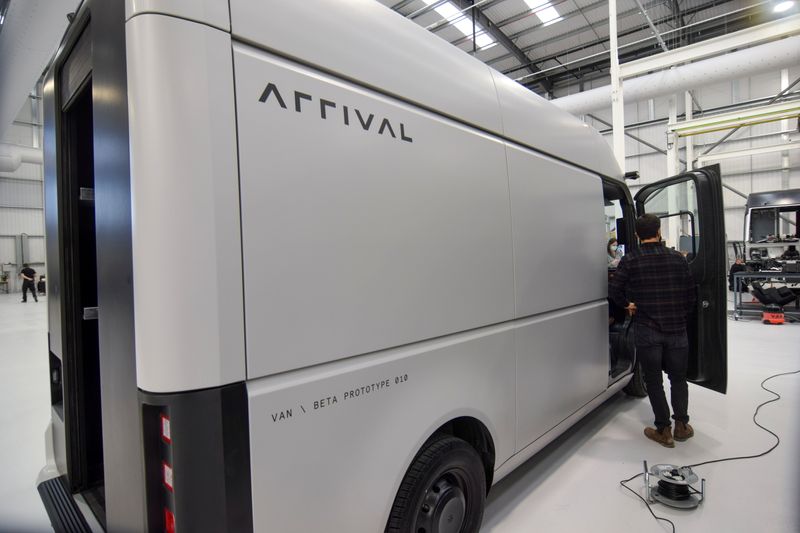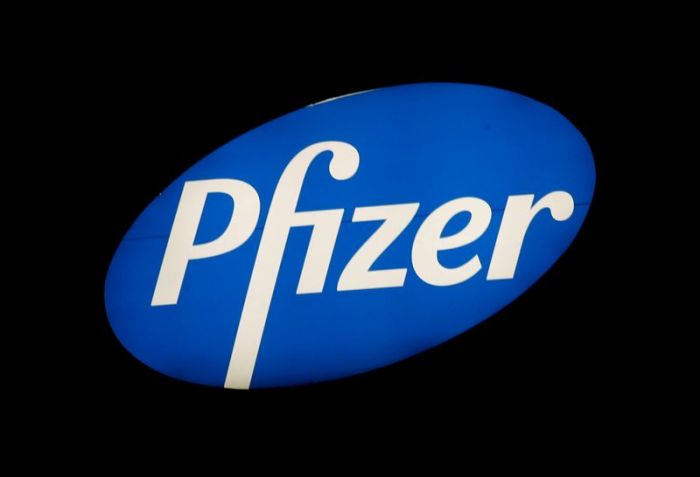(Reuters) – A bipartisan $1.2 trillion U.S. infrastructure agreement would boost the rollout of electric buses, but falls way short of what transit experts and school districts say is needed to upgrade the country’s bus fleet to battery power.
Under the plan outlined by the White House on Thursday, electric bus intiatives would receive $7.5 billion in funding. While the details are yet to be mapped out and any bill requires approval by Congress, the funding is significantly less than a measure proposed by President Joe Biden in March.
Under that plan, the EV market would have received a $174 billion boost, including a program to replace 50,000 diesel transit vehicles and electrify at least 20% of the U.S. school bus fleet.
However, any funding marks a significant increase from the roughly $130 million the Federal Transit Administration spent on electric transit bus programs in 2020.
“We believe this plan will stimulate orders and will be great for our community, our workers and our country,” said Frank Girardot, spokesman for the North American unit of China’s BYD, which dominates the U.S. electric transit bus market, along with California-based Proterra Inc.
BYD North America, however, is facing a ban on receiving federal funding by the end of this year under a U.S. crackdown on Chinese-owned companies.
Proterra declined to comment on the infrastructure deal.
Lion Electric Co, the leading electric school bus manufacturer, lauded the deal.
“Investing equally in charging infrastructure and vehicle deployment is a sound approach in scaling electrified school and public bus transit,” the company said.
Converting transit buses to battery or fuel-cell power is considered one of the fastest ways to reduce greenhouse gas emissions from the transportation sector, which at 28% accounts for the largest share of U.S. emissions.
Of the country’s roughly 70,000 transit buses, only around 2% are currently zero emission, according to the Center for Transportation and Environment (CTE), which advises transit agencies on electrification.
An even smaller share of the country’s 480,000 iconic yellow school buses currently runs on battery power.
CTE researchers estimate it would cost between $56 billion and $88 billion to transition the U.S. transit fleet to zero emission buses.
Vehicle purchases account for roughly half of that cost, with electric buses costing an average of $887,000 – almost twice as much as a diesel bus, according to the National Renewable Energy Laboratory. Those higher upfront costs are recovered after around 3.5 years, thanks to cheaper operating costs, the government agency calculated.
Bus electrification also requires charging and at times grid infrastructure upgrades. Under the bipartisan proposal, EV infrastructure would receive $7.5 billion in funding, but it is unclear what, if any, share would go toward transit.
The Electric School Bus Coalition, which groups cities and utilities, said the proposed investment was insufficient.
“We welcome all federal investment to accelerate the transition from diesel to electric school buses, but our coalition is advocating for $25 billion,” said John Hipchen, the group’s executive director.
(Reporting by Tina Bellon in Austin, Texas; Editing by Dan Grebler)



























